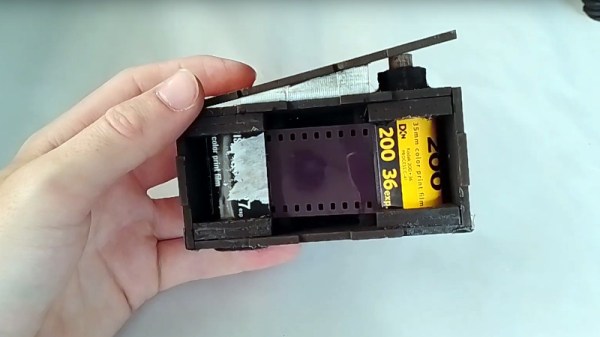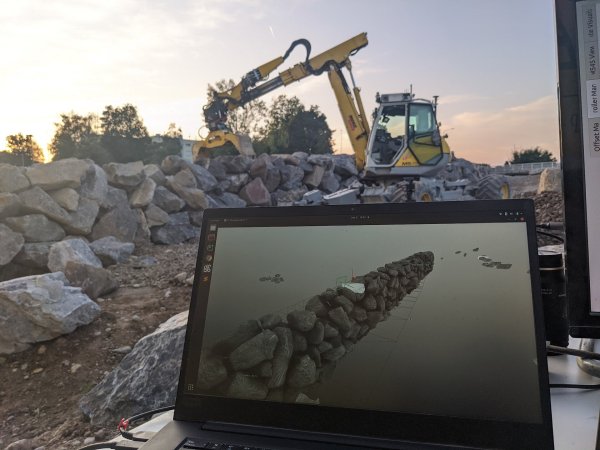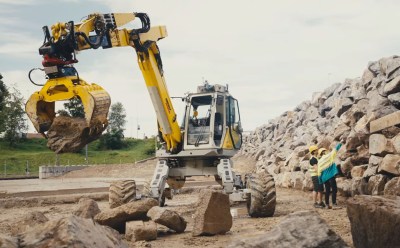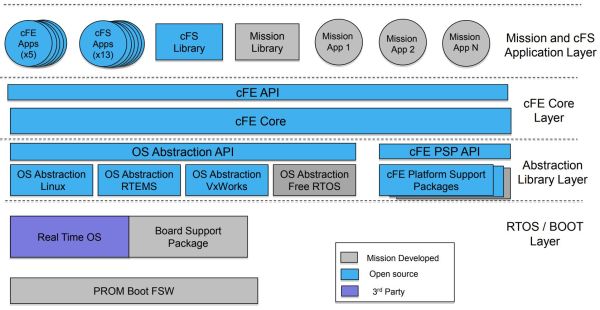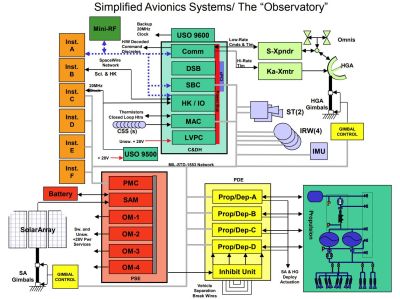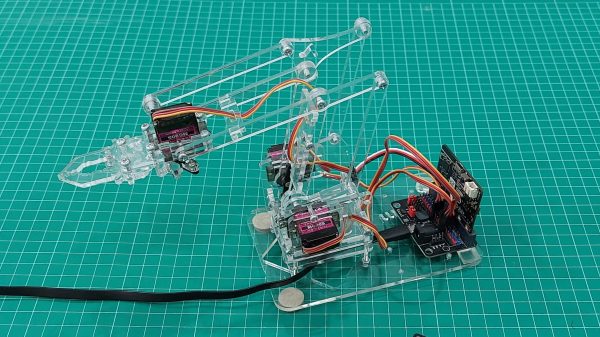Film cameras can be complex and exquisitely-crafted masterpieces of analogue technology. But at their very simplest they need be little more than a light-proof box with a piece of film at the back of it, and some kind of lens or pinhole with a shutter. [ChickenCrimpy] adds the most basic of 35 mm cartridge to create what he calls the Minimum Viable Camera. It’s a half-frame 35 mm pinhole film camera with the simplest possible construction.
 It can be built from almost any flat light-proof 3 mm thick stock, though something that you can run through a laser cutter is probably ideal. Once snapped together to make to box-like structure, tape is added along the joins for light-proofing. The film is reeled from a full 35 mm cartridge to an empty one, and cranked back frame-by-frame by means of a wooden key that engages with the spindle.
It can be built from almost any flat light-proof 3 mm thick stock, though something that you can run through a laser cutter is probably ideal. Once snapped together to make to box-like structure, tape is added along the joins for light-proofing. The film is reeled from a full 35 mm cartridge to an empty one, and cranked back frame-by-frame by means of a wooden key that engages with the spindle.
There’s no lens, instead this is a pinhole camera, and the shutter is a piece of the stock held on the front of the camera with bolts and butterfly nuts. Taking a photo is as simple as pointing the device at the subject and lifting the shutter away for a few seconds. There’s a video overview for the project which we’ve placed below the break.
It’s true that this camera needs a moment in the darkroom to load, but we like its extreme simplicity and the ethereal and grainy pictures it produces. If you fancy an introduction to 35 mm photography you could definitely do worse.

